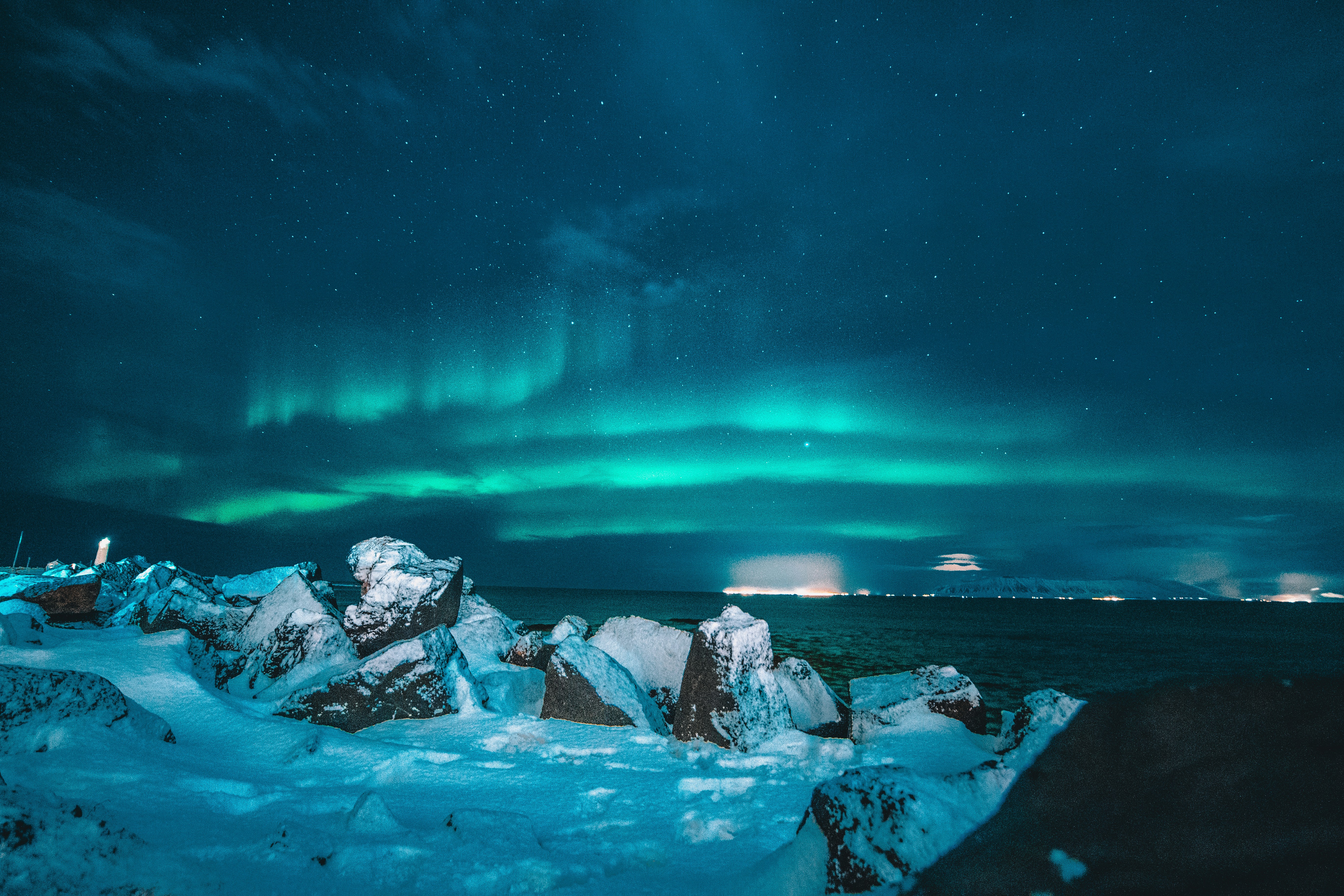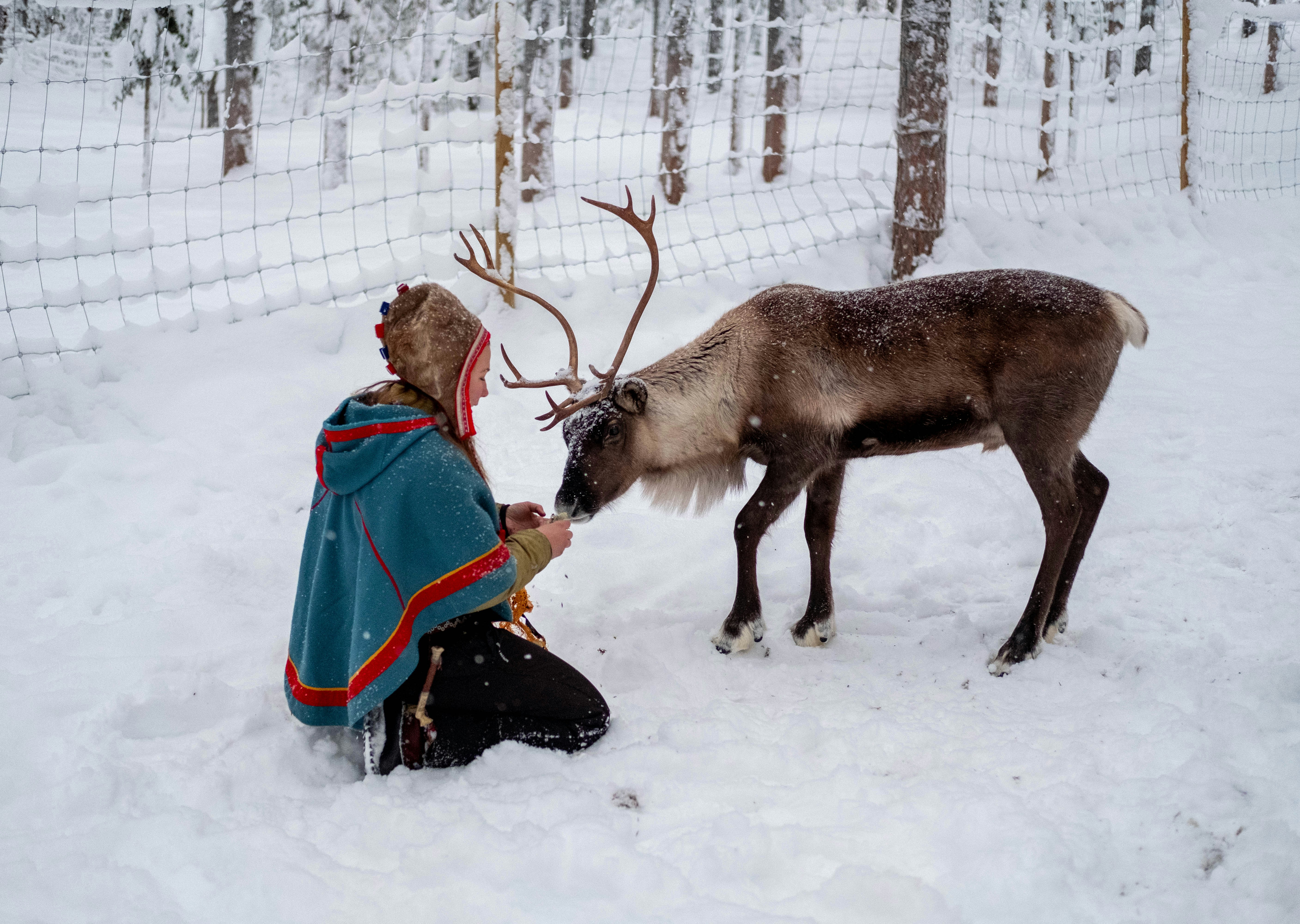Northern Lights Painting: Capturing Aurora Art Through Brush and Canvas
Master the art of northern lights painting with techniques for capturing aurora colors, movement, and atmosphere. Complete guide to painting the aurora borealis.
Northern Lights Painting: Capturing Aurora Art Through Brush and Canvas
Painting the northern lights presents unique artistic challenges and opportunities, requiring artists to capture both the ethereal beauty and dynamic movement of the aurora borealis. This comprehensive guide explores traditional and contemporary techniques for creating compelling northern lights paintings that convey the wonder and majesty of this natural phenomenon.
Understanding Aurora Colors for Painting
The Aurora Color Palette
Primary Aurora Colors:
- Aurora Green: The most common aurora color, created by oxygen at 100-300km altitude
- Deep Red: Rare high-altitude oxygen emissions during intense activity
- Purple-Blue: Nitrogen emissions at lower altitudes
- Pink: Combination of red and blue creating subtle aurora hues
- Yellow-Green: Transitional colors between primary green and other emissions
Mixing Aurora Colors:
- Viridian Green + Cadmium Yellow: Classic aurora green base
- Ultramarine Blue + Quinacridone Violet: Deep space purple tones
- Cadmium Red Light + Zinc White: Subtle pink aurora highlights
- Payne's Gray + Ultramarine: Deep night sky backgrounds
- Titanium White: Essential for aurora brightness and star points
Color Temperature and Atmospheric Perspective
Warm vs. Cool Aurora Tones: The aurora appears differently based on intensity, altitude, and viewing conditions. Understanding these variations helps artists create more authentic paintings:
- Cool Dominance: Most aurora displays favor cool greens and blues
- Warm Accents: Red and pink aurora during high activity periods
- Atmospheric Perspective: Distance affects color intensity and saturation
- Contrast Relationships: Aurora colors against dark sky backgrounds
Seasonal Color Variations:
- Winter Aurora: Crisp, clear colors with high contrast
- Autumn/Spring: Softer tones with atmospheric interference
- Twilight Aurora: Color mixing with residual daylight
- Moonlit Aurora: Silvery tones and reduced color saturation
Traditional Painting Techniques for Aurora
Oil Painting Aurora Methods
Layered Glazing Technique:
- Underpainting: Establish dark sky base with Payne's Gray and Ultramarine
- Middle Tones: Build aurora structure with transparent glazes
- Bright Areas: Add opacity for intense aurora regions
- Final Details: Sharp highlights and star points with pure white
Wet-on-Wet Blending:
- Immediate Working: Blend aurora colors while paint remains wet
- Soft Transitions: Create smooth color gradations
- Movement Suggestion: Use brushwork to imply aurora motion
- Atmospheric Effects: Blend edges for ethereal quality
Color Temperature Modeling:
- Cool Base: Establish overall cool color temperature
- Warm Accents: Strategic placement of warm aurora colors
- Reflected Light: Consider aurora light affecting landscape
- Color Harmony: Balance warm and cool for visual unity
Watercolor Aurora Techniques
Wet-in-Wet Aurora Painting:
- Sky Preparation: Wet paper in aurora areas with clean water
- Color Dropping: Introduce aurora colors into wet areas
- Natural Blending: Allow colors to blend naturally
- Controlled Bleeding: Guide color flow with paper angle
Dry Brush Techniques:
- Star Fields: Use dry brush for scattered star effects
- Aurora Rays: Vertical dry brush strokes for aurora columns
- Texture Creation: Broken color for atmospheric effects
- Detail Work: Precise control for fine aurora features
Masking Fluid Applications:
- Star Preservation: Mask individual stars before painting sky
- Aurora Highlights: Preserve brightest aurora regions
- Landscape Elements: Protect foreground details during sky work
- Creative Effects: Use masking for unique aurora patterns
Acrylic Painting Approaches
Fast-Drying Advantages:
- Layer Building: Quick color layering without long drying times
- Color Mixing: Blend colors on canvas before acrylic sets
- Texture Effects: Use acrylic's body for impasto aurora techniques
- Correction Ease: Overpaint mistakes without color muddying
Acrylic-Specific Techniques:
- Glazing Medium: Extend working time for smooth blending
- Texture Paste: Create three-dimensional aurora effects
- Fluorescent Colors: Enhance aurora brightness with specialty paints
- Mixed Media: Combine with other mediums for unique effects
Contemporary Digital Painting Methods
Digital Aurora Art Techniques
Layer-Based Painting:
- Background Layer: Establish night sky with gradient tools
- Aurora Base: Paint basic aurora shape and structure
- Color Variations: Add color complexity with blend modes
- Highlight Details: Final brightness and star details
Brush Selection for Digital Aurora:
- Soft Round Brushes: Smooth aurora color transitions
- Textured Brushes: Atmospheric effects and star fields
- Custom Aurora Brushes: Specialized brushes for aurora patterns
- Blend Modes: Screen, overlay, and soft light for aurora effects
Digital Color Mixing:
- Color Theory: Use digital color wheels for accurate aurora hues
- Saturation Control: Adjust color intensity for realistic effects
- Luminosity: Control aurora brightness without affecting color
- Color Harmony: Digital tools for balanced color relationships
Photomanipulation and Reference Integration
Photo Reference Usage:
- Color Sampling: Extract accurate colors from aurora photographs
- Structure Analysis: Study aurora formation patterns
- Composition Ideas: Learn from successful aurora photography
- Atmospheric Effects: Understand how aurora interacts with landscape
Digital Enhancement Techniques:
- HDR Processing: Expand dynamic range for aurora visibility
- Color Grading: Enhance natural aurora colors
- Composite Creation: Combine multiple aurora images
- Artistic Interpretation: Transform photos into painted effects
Composition and Design for Aurora Paintings
Rule of Thirds and Aurora Placement
Horizon Positioning:
- Lower Third: Emphasize dramatic sky and aurora display
- Upper Third: Focus on landscape with aurora accent
- Central Placement: Balance sky and land for equal importance
- Dynamic Angles: Diagonal compositions for energy and movement
Aurora Flow and Movement:
- Vertical Emphasis: Aurora rays pointing toward magnetic zenith
- Horizontal Sweeps: Broad aurora arcs across the sky
- Spiral Formations: Corona aurora radiating from overhead point
- S-Curves: Graceful aurora curtains creating visual flow
Foreground Integration
Landscape Elements:
- Silhouetted Mountains: Create dramatic contrast with aurora
- Reflected Water: Double aurora impact with reflections
- Traditional Buildings: Cultural context with Sami structures
- Winter Trees: Bare branches framing aurora displays
Scale and Perspective:
- Human Figures: Provide scale reference for aurora magnitude
- Architecture: Buildings showing aurora's environmental context
- Natural Features: Rock formations and geographic landmarks
- Distance Indicators: Multiple depth planes for spatial relationship
Color Harmony in Aurora Paintings
Complementary Color Schemes:
- Green Aurora + Red Landscape: Classic complementary contrast
- Blue Sky + Orange Ground Light: Warm/cool temperature contrast
- Purple Aurora + Yellow Accents: Sophisticated color relationships
- Analogous Harmonies: Related colors for subtle aurora variations
Value Structure:
- Dark Sky Background: Provide contrast for bright aurora
- Mid-tone Landscapes: Balanced values for realistic relationships
- Bright Aurora Highlights: Focal points drawing viewer attention
- Atmospheric Perspective: Lighter values for distant elements
Plein Air Aurora Painting Challenges
Outdoor Painting Considerations
Equipment Preparation:
- Cold Weather Gear: Insulated easel setups and hand warmers
- Lighting Solutions: Red LED lights preserving night vision
- Paint Management: Prevent freezing with alcohol mediums
- Canvas Preparation: Pre-stretch canvases for cold weather work
Working in Darkness:
- Value Studies: Focus on tonal relationships rather than color detail
- Memory Painting: Observe aurora, then paint from memory
- Quick Sketches: Capture aurora essence in short studies
- Photo Backup: Reference photos for studio completion
Safety and Logistics:
- Location Scouting: Identify safe, accessible painting locations
- Weather Monitoring: Aurora and meteorological forecasting
- Emergency Preparedness: Cold weather safety protocols
- Transportation: Vehicle access for equipment and warming
Studio Finishing Techniques
Plein Air to Studio Transition:
- Color Notes: Written descriptions of aurora colors and effects
- Photographic Reference: Support sketches with accurate photos
- Memory Enhancement: Complete paintings while memories remain fresh
- Detail Development: Add fine details impossible in field conditions
Mixed Approach Benefits:
- Authentic Color: Plein air experience provides true color relationships
- Controlled Environment: Studio work allows detailed development
- Best of Both: Combine outdoor authenticity with indoor precision
- Artistic Growth: Develop both observational and technical skills
Historical Aurora Painting Traditions
Indigenous Aurora Art
Traditional Representations:
- Sami Art: Traditional joik-inspired visual interpretations
- Inuit Sculpture: Three-dimensional aurora representations
- First Nations: Symbolic aurora imagery in traditional art forms
- Cultural Significance: Aurora as spiritual and ancestral connections
Contemporary Indigenous Artists:
- Modern Interpretations: Contemporary artists exploring traditional themes
- Cultural Preservation: Art maintaining traditional aurora knowledge
- Cross-Cultural Exchange: Indigenous and Western artistic collaboration
- Educational Value: Art teaching traditional aurora understanding
European Aurora Art History
Romantic Period Aurora:
- Caspar David Friedrich: German Romantic aurora landscapes
- Nordic Artists: Scandinavian painters documenting aurora phenomena
- Scientific Illustration: Accurate aurora documentation in art
- Cultural Impact: Aurora art influencing European understanding
Modern Aurora Art Movement:
- Contemporary Artists: Modern painters exploring aurora themes
- Abstract Interpretations: Non-representational aurora art
- Photography Influence: How aurora photography affects painting
- Global Perspective: International artists painting aurora experiences
Teaching Aurora Painting Techniques
Workshop Structure
Beginner Aurora Painting:
- Color Theory: Basic aurora color relationships
- Simple Compositions: Easy aurora and landscape combinations
- Technique Introduction: Basic brush and paint handling
- Completion Focus: Finished painting in single session
Advanced Aurora Techniques:
- Complex Color Mixing: Sophisticated aurora color relationships
- Dynamic Composition: Advanced design principles
- Mixed Media: Combining different artistic mediums
- Personal Style Development: Finding individual artistic voice
Educational Resources
Study Materials:
- Aurora Photographs: High-quality reference image collections
- Scientific Information: Understanding aurora formation for accurate painting
- Art History: Examples of successful aurora paintings
- Technique Videos: Demonstrations of specific painting methods
Practice Exercises:
- Color Studies: Small paintings exploring aurora color relationships
- Value Sketches: Tonal studies of aurora and landscape
- Composition Thumbnails: Quick design explorations
- Technique Practice: Isolated skill development exercises
Materials and Supplies for Aurora Painting
Essential Paint Colors
Oil Painting Palette:
- Titanium White: Essential for aurora brightness and mixing
- Payne's Gray: Deep sky backgrounds and neutral mixing
- Ultramarine Blue: Primary blue for night skies
- Viridian Green: Classic aurora green base color
- Cadmium Yellow Light: Aurora green mixing and warm accents
- Quinacridone Violet: Purple aurora tones
- Cadmium Red Light: Red aurora and warm landscape accents
Watercolor Selection:
- Prussian Blue: Intense blue for night sky washes
- Sap Green: Natural aurora green foundation
- Quinacridone Rose: Subtle pink aurora highlights
- Payne's Gray: Atmospheric and cloud effects
- Chinese White: Opaque highlights and star points
Specialized Equipment
Brushes for Aurora Painting:
- Flat Brushes: Broad sky washes and aurora sweeps
- Round Brushes: Detail work and precise color placement
- Fan Brushes: Texture effects and star field creation
- Liner Brushes: Fine details and aurora ray definition
Support Materials:
- Canvas Preparation: Proper priming for aurora painting
- Paper Selection: Weight and texture for different techniques
- Panel Options: Smooth surfaces for detailed aurora work
- Size Considerations: Format choices for aurora compositions
Painting the northern lights offers artists unique opportunities to explore color, light, and movement while connecting with one of nature's most spectacular phenomena. Whether working in traditional media or digital formats, successful aurora paintings combine technical skill with emotional response to create artwork that captures both the visual beauty and spiritual impact of the aurora borealis.
Experience the inspiration for northern lights painting during your stay at Lyngen Seaside, where direct aurora encounters provide the authentic visual reference and emotional connection essential for creating compelling aurora artwork.

